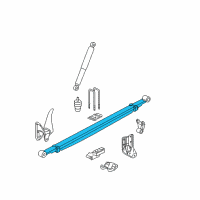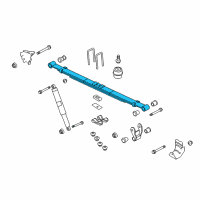Leaf Spring
Select vehicle to guarantee fit
- Department
- Maximum Lift Height
- Brands
- Prices
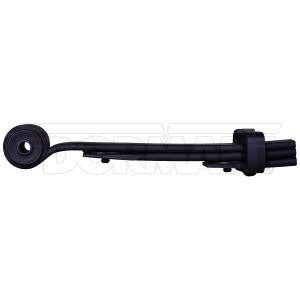

Dorman® Rear Passenger Side Leaf Spring
PartNumber: 929-406$251.47Product Specifications- Axle Modification Needed: No
- Bushing: Without
- Color: Black
- End 1 Type: Berlin Eye
- End 2 Type: Up Turned Eye
- Helper Spring: No
- Leaf Quantity: 5
- Length A: 31.38"
- Length B: 32"
- Load Rate: 1900 lbs
- Material: Steel
- Maximum Drop: 0
- Maximum Lift Height: 0
- Mounting Hardware: Without
- OE Part Number: 482100C100, 482100C140, 482100C280, 482100C300, 482100C340
- Pack Thickness: 2.13"
- Spring Arc Length: 63.38"
- SRI#: 90-363
- Suspension Grade Type: Standard
- UPC: 889245159205
- Width: 2.36"
- Part Description: Rear Passenger Side Leaf Spring
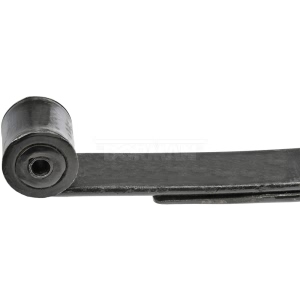

Dorman® Rear Passenger Side Leaf Spring
PartNumber: 929-403$244.27Product Specifications- Axle Modification Needed: No
- Bushing: Without
- Color: Black
- End 1 Type: Up Turned Eye
- End 2 Type: Up Turned Eye
- Helper Spring: No
- Leaf Quantity: 3
- Length A: 28.15"
- Length B: 31.69"
- Material: Steel
- Maximum Drop: 0
- Maximum Lift Height: 0
- Mounting Hardware: Without
- OE Part Number: 448335090
- Pack Thickness: 1.65"
- Packaging: Bulk
- Spring Arc Length: 8.66"
- SRI#: 90-221
- Suspension Grade Type: Standard
- UPC: 885484640177
- Width: 2.40"
- Part Description: Rear Passenger Side Leaf Spring
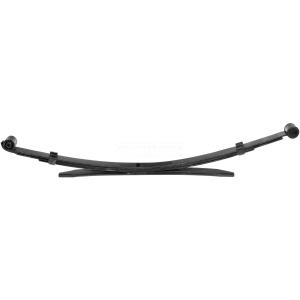

Dorman® Rear Passenger Side Leaf Spring
PartNumber: 929-404$344.00Product Specifications- Axle Modification Needed: No
- Bushing: Without
- Color: Black
- End 1 Type: Up Turned Eye
- End 2 Type: Berlin Eye
- Helper Spring: No
- Leaf Quantity: 4 (3/1)
- Length A: 29.33"
- Length B: 26.38"
- Material: Steel
- Maximum Drop: 0
- Maximum Lift Height: 0
- Mounting Hardware: Without
- OE Part Number: 4821004360
- Pack Thickness: 1.41"
- Spring Arc Length: 4.76"
- SRI#: 90-275
- Suspension Grade Type: Standard
- UPC: 885484791947
- Width: 2.36"
- Part Description: Rear Passenger Side Leaf Spring


Dorman® Rear Leaf Spring
PartNumber: 929-108$300.25Product Specifications- Axle Modification Needed: No
- Bushing: Without
- Color: Black
- End 1 Type: Berlin Eye
- End 2 Type: Berlin Eye
- Helper Spring: No
- Leaf Quantity: 6
- Length A: 32"
- Length B: 32"
- Material: Steel
- Maximum Drop: 0
- Maximum Lift Height: 0
- Mounting Hardware: Without
- OE Part Number: 15529528, 15529565, 15604165, 15620358, 15659740, 15976726
- Pack Thickness: 2.82"
- Packaging: Bulk
- Spring Arc Length: 6.44"
- SRI#: 22-979
- Suspension Grade Type: Standard
- UPC: 019495153153
- Width: 2.5"
- Part Description: Rear Leaf Spring
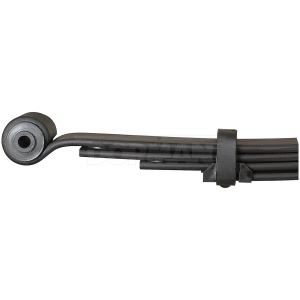

Dorman® Rear Leaf Spring
PartNumber: 929-146$384.98Product Specifications- Axle Modification Needed: No
- Bushing: Without
- Color: Black
- End 1 Type: Berlin Eye
- End 2 Type: Berlin Eye
- Helper Spring: No
- Leaf Quantity: 5 (4/1)
- Length A: 33.25"
- Length B: 33.25"
- Load Rate: 3300 lbs
- Material: Steel
- Mounting Hardware: Without
- OE Part Number: 7C3Z5560FD
- Pack Thickness: 2.5"
- Spring Arc Length: 6.25"
- SRI#: 43-1681
- Suspension Grade Type: Standard
- UPC: 885484735088
- Width: 3"
- Part Description: Rear Leaf Spring
- $491.89 MSRP:
$677.55You Save: $185.66 (28%)Product Specifications- Other Names: Leaf Spring Assembly; Spring Assembly-Leaf, Rear
- Item Dimensions: 60.2 x 9.4 x 3.6 inches
- Item Weight: 46.80 Pounds
- Fitment Type: Direct Replacement
- Replaces: 55020-EB000
- Part Description: Spring Assembly Leaf, Rear
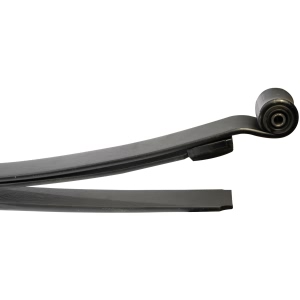

Dorman® Rear Leaf Spring
PartNumber: 929-600$480.12Product Specifications- Axle Modification Needed: No
- Bushing: Without
- Color: Black
- End 1 Type: Berlin Eye
- End 2 Type: Berlin Eye
- Leaf Quantity: 3.5
- Length A: 29.33"
- Length B: 29.29"
- Load Rate: 1750 lbs
- Material: Steel
- Maximum Drop: 0
- Maximum Lift Height: 0
- Mounting Hardware: Without
- OE Part Number: 5118621AA
- Pack Thickness: 2.19"
- Packaging: Bulk
- Spring Arc Length: 8"
- SRI#: 46-1343
- Suspension Grade Type: Standard
- UPC: 019495389323
- Width: 2.8"
- Part Description: Rear Leaf Spring
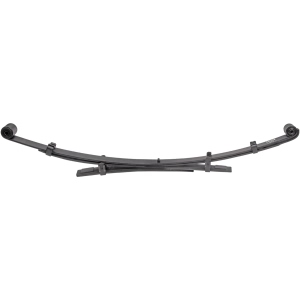

Dorman® Rear Passenger Side Leaf Spring
PartNumber: 929-114$206.38Product Specifications- Axle Modification Needed: No
- Bushing: Without
- Color: Black
- End 1 Type: Down Turned Eye
- End 2 Type: Down Turned Eye
- Helper Spring: No
- Leaf Quantity: 3
- Length A: 27.55"
- Length B: 27.55"
- Material: Steel
- Maximum Drop: 0
- Maximum Lift Height: 0
- Mounting Hardware: Without
- OE Part Number: 48210-04550, 48210-04551, 48210-35A40
- Pack Thickness: 1.33"
- Packaging: Card
- Spring Arc Length: 6.25"
- SRI#: 90-297, 90-477
- Suspension Grade Type: Standard
- UPC: 019495740056
- Width: 2.36"
- Part Description: Rear Passenger Side Leaf Spring
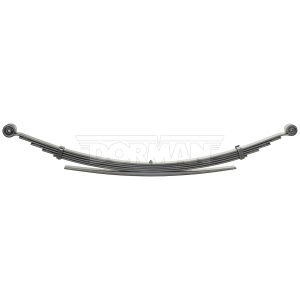

Dorman® Rear Leaf Spring
PartNumber: 929-129$343.84Product Specifications- Axle Modification Needed: No
- Bushing: Without
- Color: Black
- End 1 Type: Berlin Eye
- End 2 Type: Berlin Eye
- Helper Spring: No
- Leaf Quantity: 6 (5/1)
- Length A: 32"
- Length B: 32"
- Material: Steel
- Maximum Drop: 0
- Maximum Lift Height: 0
- Mounting Hardware: Without
- OE Part Number: 15063185
- Pack Thickness: 2.89"
- Spring Arc Length: 7.25"
- SRI#: 22-1289
- Suspension Grade Type: Standard
- UPC: 885484360860
- Width: 2.5"
- Part Description: Rear Leaf Spring
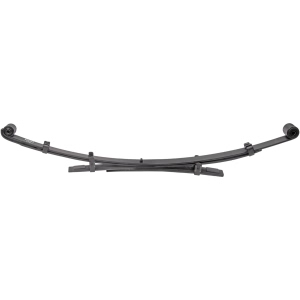

Dorman® Rear Driver Side Leaf Spring
PartNumber: 929-113$260.03Product Specifications- Axle Modification Needed: No
- Bushing: Without
- Color: Black
- End 1 Type: Down Turned Eye
- End 2 Type: Down Turned Eye
- Helper Spring: No
- Leaf Quantity: 3
- Length A: 26.77"
- Length B: 27.16"
- Material: Steel
- Maximum Drop: 0
- Maximum Lift Height: 0
- Mounting Hardware: Without
- OE Part Number: 48220-04190, 48220-04191, 48220-35040
- Packaging: Card
- Spring Arc Length: 6.5"
- SRI#: 90-479, 90-299
- Suspension Grade Type: Standard
- UPC: 019495740049
- Width: 2.36"
- Part Description: Rear Driver Side Leaf Spring
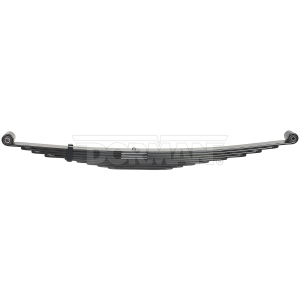

Dorman® Rear Leaf Spring
PartNumber: 929-234$350.27Product Specifications- Axle Modification Needed: No
- Bushing: Without
- Color: Black
- End 1 Type: Up Turned Eye
- End 2 Type: Up Turned Eye
- Helper Spring: No
- Leaf Quantity: 9
- Length A: 23.88"
- Length B: 31"
- Material: Steel
- Maximum Drop: 0
- Maximum Lift Height: 0
- Mounting Hardware: Without
- OE Part Number: 4C2Z 5560-VA, 5C2Z 5560-VA, F3UA5560MA, F3UZ 5560-A, F5UZ 5560-VA
- Pack Thickness: 3.38"
- Spring Arc Length: 1.88"
- SRI#: 43-1085
- Suspension Grade Type: Standard
- UPC: 885484368903
- Width: 3"
- Part Description: Rear Leaf Spring
OEM (Genuine) Leaf Spring
PartNumber: 2C3Z-5310-HA$220.13 MSRP:$336.60You Save: $116.47 (35%)Product Specifications- Other Names: Leaf Spring
- Item Dimensions: 60.2 x 9.3 x 4.2 inches
- Item Weight: 24.50 Pounds
- Fitment Type: Direct Replacement
- Replaces: F81Z-5310-AE, 2C3Z-5310-AE
- Part Description: Leaf Spring
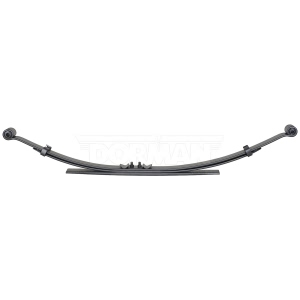

Dorman® Rear Leaf Spring
PartNumber: 929-228$197.01Product Specifications- Axle Modification Needed: No
- Bushing: Without
- Color: Black
- End 1 Type: Berlin Eye
- End 2 Type: Berlin Eye
- Helper Spring: No
- Leaf Quantity: 3 (2/1)
- Length A: 25.63"
- Length B: 31.38"
- Material: Steel
- Maximum Drop: 0
- Maximum Lift Height: 0
- Mounting Hardware: Without
- OE Part Number: 6L345560RD, 6L3Z5560RB, 6L3Z5560RD
- Pack Thickness: 1.43"
- Spring Arc Length: 7.25"
- SRI#: 43-1679
- Suspension Grade Type: Standard
- UPC: 885484368187
- Width: 3"
- Part Description: Rear Leaf Spring


Dorman® Rear Leaf Spring
PartNumber: 929-128$224.31Product Specifications- Axle Modification Needed: No
- Bushing: Without
- Color: Black
- End 1 Type: Berlin Eye
- End 2 Type: Berlin Eye
- Helper Spring: No
- Leaf Quantity: 3 (2/1)
- Length A: 32"
- Length B: 32"
- Material: Steel
- Maximum Drop: 0
- Maximum Lift Height: 0
- Mounting Hardware: Without
- OE Part Number: 15895991, 20840011, 20870051, 22787764, 25823546, 25841516, 25976356
- Pack Thickness: 1.85"
- Spring Arc Length: 7.5"
- SRI#: 22-1567
- Suspension Grade Type: Standard
- UPC: 885484369023
- Width: 2.5"
- Part Description: Rear Leaf Spring
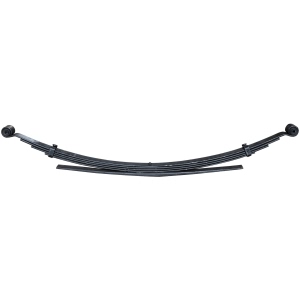

Dorman® Rear Leaf Spring
PartNumber: 929-107$260.03Product Specifications- Axle Modification Needed: No
- Bushing: Without
- Color: Black
- End 1 Type: Berlin Eye
- End 2 Type: Berlin Eye
- Helper Spring: No
- Leaf Quantity: 5
- Length A: 32"
- Length B: 32"
- Material: Steel
- Maximum Drop: 0
- Maximum Lift Height: 0
- Mounting Hardware: Without
- OE Part Number: 15659739
- Pack Thickness: 2.4"
- Packaging: Bulk
- Spring Arc Length: 7.56"
- SRI#: 22-795
- Suspension Grade Type: Standard
- UPC: 019495153146
- Width: 2.5"
- Part Description: Rear Leaf Spring
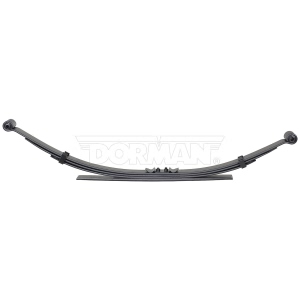

Dorman® Rear Leaf Spring
PartNumber: 929-233$240.00Product Specifications- Axle Modification Needed: No
- Bushing: Without
- Color: Black
- End 1 Type: Berlin Eye
- End 2 Type: Berlin Eye
- Leaf Quantity: 4 (3/1)
- Length A: 25.63"
- Length B: 31.38"
- Material: Steel
- Maximum Drop: 0
- Maximum Lift Height: 0
- Mounting Hardware: Without
- OE Part Number: 4L345560PK, 4L3Z 5560-PC
- Pack Thickness: 1.75"
- Spring Arc Length: 7.63"
- SRI#: 43-1555
- Suspension Grade Type: Standard
- UPC: 885484368859
- Width: 3"
- Part Description: Rear Leaf Spring
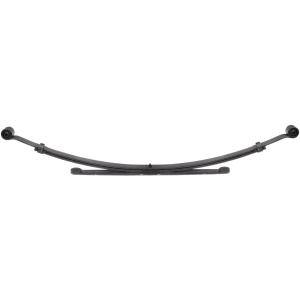

Dorman® Rear Leaf Spring
PartNumber: 929-115$208.25Product Specifications- Axle Modification Needed: No
- Bushing: Without
- Color: Black
- End 1 Type: Berlin Eye
- End 2 Type: Berlin Eye
- Helper Spring: No
- Leaf Quantity: 3
- Length A: 32"
- Length B: 32"
- Material: Steel
- Maximum Drop: 0
- Maximum Lift Height: 0
- Mounting Hardware: Without
- OE Part Number: 15246971
- Pack Thickness: 1.5"
- Packaging: Card
- Spring Arc Length: 7.5"
- SRI#: 22-1503
- Suspension Grade Type: Standard
- UPC: 037495169837
- Width: 2.5"
- Part Description: Rear Leaf Spring
OEM (Genuine) Leaf Spring
PartNumber: 23418311$235.45 MSRP:$373.75You Save: $138.30 (38%)Product Specifications- Other Names: Leaf Spring
- Item Dimensions: 65.9 x 10.2 x 3.1 inches
- Item Weight: 60.60 Pounds
- Fitment Type: Direct Replacement
- Replaces: 23144504, 23402590, 23208346, 23287269, 25823548, 25841518, 20870049, 20870050, 20840010, 23208339, 22787766, 23402589, 25841517, 22787765, 20901044, 20901045
- Part Description: Leaf Spring


Dorman® Rear Passenger Side Leaf Spring
PartNumber: 929-126$297.21Product Specifications- Axle Modification Needed: No
- Bushing: Without
- Color: Black
- End 1 Type: Berlin Eye
- End 2 Type: Berlin Eye
- Helper Spring: No
- Leaf Quantity: 5 (4/1)
- Length A: 32"
- Length B: 32"
- Material: Steel
- Maximum Drop: 0
- Maximum Lift Height: 0
- Mounting Hardware: Without
- OE Part Number: 15711753, 20870047
- Pack Thickness: 2.51"
- Spring Arc Length: 6.63"
- SRI#: 22-1269
- Suspension Grade Type: Standard
- UPC: 885484367951
- Width: 2.5"
- Part Description: Rear Passenger Side Leaf Spring


Dorman® Rear Leaf Spring
PartNumber: 929-224$250.61Product Specifications- Axle Modification Needed: No
- Bushing: Without
- Color: Black
- End 1 Type: Berlin Eye
- End 2 Type: Berlin Eye
- Helper Spring: No
- Leaf Quantity: 5 (4/1)
- Length A: 25"
- Length B: 33.25"
- Material: Steel
- Maximum Drop: 0
- Maximum Lift Height: 0
- Mounting Hardware: Without
- OE Part Number: F81A5560CD, F81Z 5560-CA, YC3Z 5560-DA
- Pack Thickness: 2.23"
- Spring Arc Length: 7.75"
- SRI#: 43-1263
- Suspension Grade Type: Standard
- UPC: 885484362277
- Width: 3"
- Part Description: Rear Leaf Spring
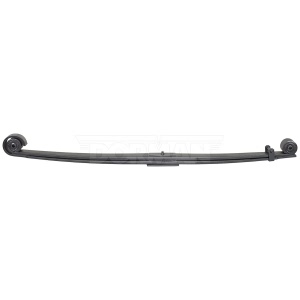

Dorman® Front Passenger Side Leaf Spring
PartNumber: 929-230$268.07Product Specifications- Axle Modification Needed: No
- Bushing: Without
- Color: Black
- End 1 Type: Berlin Eye
- End 2 Type: Berlin Eye
- Helper Spring: No
- Leaf Quantity: 2/PD
- Length A: 23.88"
- Length B: 28.38"
- Material: Steel
- Maximum Drop: 0
- Maximum Lift Height: 0
- Mounting Hardware: Without
- OE Part Number: E3TA5310ABA, E3TZ 5310-R
- Pack Thickness: 2.05"
- Spring Arc Length: 1.75"
- SRI#: 43-498
- Suspension Grade Type: Standard
- UPC: 885484368583
- Width: 3"
- Part Description: Front Passenger Side Leaf Spring


Dorman® Front Leaf Spring
PartNumber: 929-225$212.47Product Specifications- Axle Modification Needed: No
- Bushing: Without
- Color: Black
- End 1 Type: Up Turned Eye
- End 2 Type: Up Turned Eye
- Helper Spring: No
- Leaf Quantity: 2
- Length A: 27.5"
- Length B: 28.13"
- Material: Steel
- Maximum Drop: 0
- Maximum Lift Height: 0
- Mounting Hardware: Without
- OE Part Number: 1C3Z 5310-AF, 2C3Z5310AF, F81Z 5310-AG, YC3Z 5310-AN
- Pack Thickness: 1.39"
- Spring Arc Length: 5"
- SRI#: 43-818
- Suspension Grade Type: Standard
- UPC: 885484367630
- Width: 3"
- Part Description: Front Leaf Spring
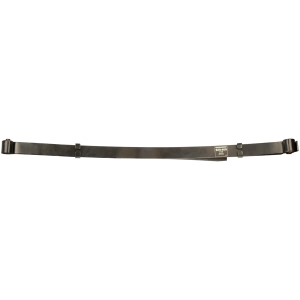
 $190.05Product Specifications
$190.05Product Specifications- Axle Modification Needed: No
- Bushing: Without
- Color: Black
- End 1 Type: Berlin Eye
- End 2 Type: Up Turned Eye
- Helper Spring: No
- Leaf Quantity: 4
- Length A: 22.52"
- Length B: 28.62"
- Material: Steel
- Maximum Drop: 0
- Maximum Lift Height: 0
- Mounting Hardware: Without
- OE Part Number: 48210-04051, 48210-04052, 48210-04053, 48210-04080, 48210-04081, 48220-04020, 48220-04021, 48220-04022, 48220-04030, 48220-04031
- Packaging: Bulk
- Spring Arc Length: 5.63"
- SRI#: 90-173
- Suspension Grade Type: Standard
- UPC: 019495153184
- Width: 2.36"
- Part Description: Rear Direct Replacement Passenger Side Leaf Spring
OEM (Genuine) Leaf Spring
PartNumber: DL3Z-5560-A$391.83 MSRP:$583.10You Save: $191.27 (33%)Product Specifications- Other Names: Leaf Spring, Spring
- Item Dimensions: 66.8 x 4.1 x 10.1 inches
- Item Weight: 68.80 Pounds
- Fitment Type: Direct Replacement
- Replaces: 9L3Z-5560-J, CL3Z-5560-K
- Part Description: Leaf Spring
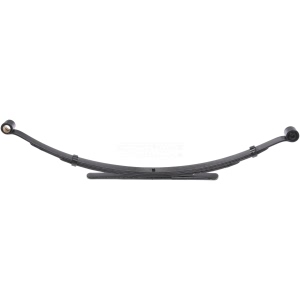

Dorman® Rear Leaf Spring
PartNumber: 929-502$190.05Product Specifications- Axle Modification Needed: No
- Bushing: Without
- Color: Black
- End 1 Type: Berlin Eye
- End 2 Type: Berlin Eye
- Helper Spring: No
- Leaf Quantity: 3/1
- Length A: 24.80"
- Length B: 28.27"
- Material: Steel
- Maximum Drop: 0
- Maximum Lift Height: 0
- Mounting Hardware: Without
- OE Part Number: 55020EA20A
- Pack Thickness: 1.57"
- Spring Arc Length: 7.28"
- SRI#: 69-293
- Suspension Grade Type: Standard
- UPC: 885484640238
- Width: 2.36"
- Part Description: Rear Leaf Spring
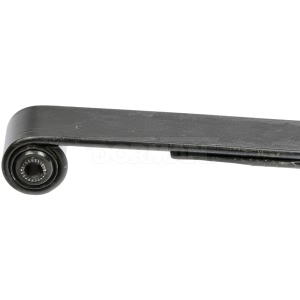

Dorman® Rear Driver Side Leaf Spring
PartNumber: 929-603$197.62Product Specifications- Axle Modification Needed: No
- Bushing: Without
- Color: Black
- End 1 Type: Berlin Eye
- End 2 Type: Berlin Eye
- Helper Spring: No
- Leaf Quantity: 5
- Length A: 23.75"
- Length B: 32.25"
- Material: Steel
- Maximum Drop: 0
- Maximum Lift Height: 0
- Mounting Hardware: Without
- OE Part Number: F81A5588DC, F81Z5588DA
- Pack Thickness: 1.563"
- Spring Arc Length: 6.688"
- SRI#: 34-1481
- Suspension Grade Type: Standard
- UPC: 037495608350
- Width: 2.5"
- Part Description: Rear Driver Side Leaf Spring
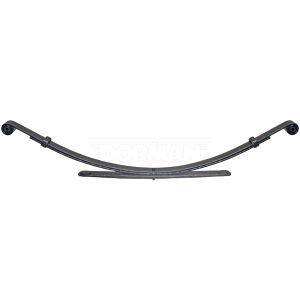

Dorman® Rear Leaf Spring
PartNumber: 929-501$193.03Product Specifications- Axle Modification Needed: No
- Bushing: Without
- Color: Black
- End 1 Type: Up Turned Eye
- End 2 Type: Up Turned Eye
- Helper Spring: No
- Leaf Quantity: 3 (2/1)
- Length A: 25.75"
- Length B: 27.52"
- Material: Steel
- Maximum Drop: 0
- Maximum Lift Height: 0
- Mounting Hardware: Without
- OE Part Number: 550208Z900
- Pack Thickness: 1.34"
- Spring Arc Length: 8.50"
- SRI#: 69-275
- Suspension Grade Type: Standard
- UPC: 885484640214
- Width: 2.36"
- Part Description: Rear Leaf Spring


Dorman® Rear Leaf Spring
PartNumber: 929-140$197.01Product Specifications- Axle Modification Needed: No
- Bushing: Without
- Color: Black
- End 1 Type: Berlin Eye
- End 2 Type: Up Turned Eye
- Helper Spring: No
- Leaf Quantity: 4 (3/1)
- Length A: 31.25"
- Length B: 32"
- Load Rate: 1715 lbs.
- Material: Steel
- Maximum Drop: 0
- Maximum Lift Height: 0
- Mounting Hardware: Without
- OE Part Number: 52113141AI
- Pack Thickness: 1.9"
- Spring Arc Length: 7.56"
- SRI#: 34-1451
- Suspension Grade Type: Standard
- UPC: 885484731141
- Width: 2.5"
- Part Description: Rear Leaf Spring


Dorman® Rear Leaf Spring
PartNumber: 929-143$389.37Product Specifications- Axle Modification Needed: No
- Bushing: Without
- Color: Black
- End 1 Type: Berlin Eye
- End 2 Type: Up Turned Eye
- Helper Spring: No
- Leaf Quantity: 4 (3/1)
- Length A: 30.5"
- Length B: 30.5"
- Load Rate: 3300 lbs
- Material: Steel
- Maximum Drop: 0
- Maximum Lift Height: 0
- Mounting Hardware: Without
- OE Part Number: 04670950AA
- Pack Thickness: 3.5"
- Spring Arc Length: 6.56"
- SRI#: 34-1633
- Suspension Grade Type: Standard
- UPC: 885484733060
- Width: 3"
- Part Description: Rear Leaf Spring
OEM (Genuine) Leaf Spring
PartNumber: DL3Z-5560-D$413.54 MSRP:$615.40You Save: $201.86 (33%)Product Specifications- Other Names: Leaf Spring, Spring
- Item Dimensions: 70.0 x 8.2 x 4.0 inches
- Item Weight: 66.60 Pounds
- Fitment Type: Direct Replacement
- Replaces: AL3Z-5560-C, 9L3Z-5560-L, 9L3Z-5560-G, CL3Z-5560-L
- Part Description: Leaf Spring
About Leaf Spring
The leaf spring is a component that helps provide support to the vehicle and absorbs bumps on the road. This suspension system has been replaced by a new suspension system, but it is still in vehicles that haul or tow.
Leaf spring principlesThe leaf spring was common in automobiles around 1970, but a sudden change saw America move to front-wheel drive. It caused manufacturers to go from leaf springs to coil springs, although leaf springs aren't equipped on cars they are still very much present on larger trucks and SUVs.
The leaf spring can be located in the rear axle which does not need the trailing arms and Panhard rod, a simple live axle suspension that saves cost and weight. Now modern parabolic leaf springs have fewer leaves which can vary in thickness due to the parabolic curve.
CharacteristicsTwo ends of a leaf spring are made as eyes that connect the ends to the frame of the vehicle. One eye is fixed translationally but can move along with the spring while the other eye is connected to the hinge mechanism and has limited movement. And the leaf spring acts as a connection for containing the axle in position.
Common issues with a bad leaf springA bad leaf spring can lead to poor handling, tire wear, and bottoming out.



